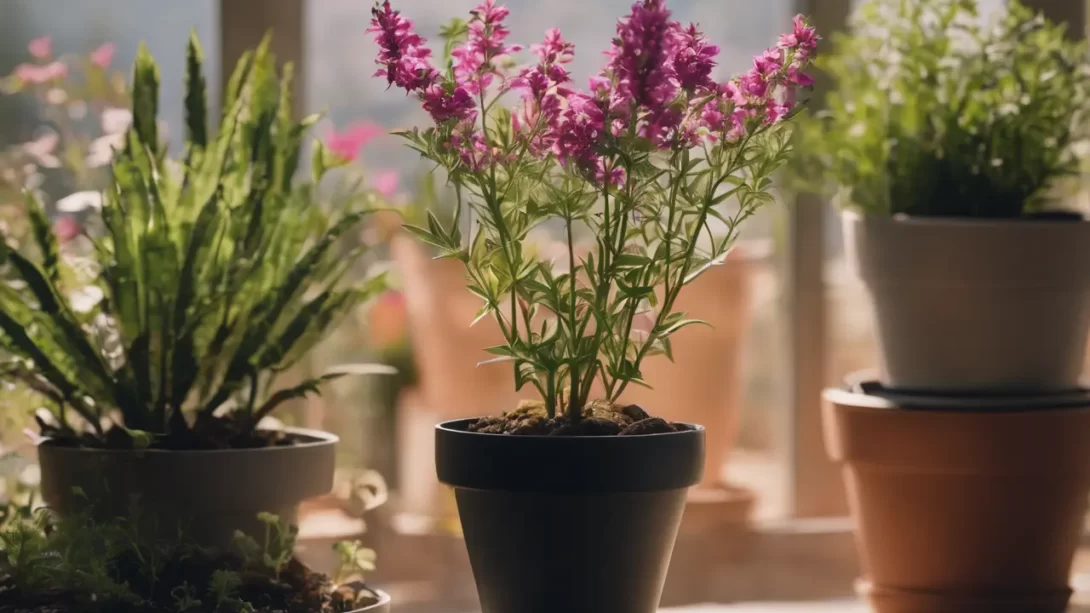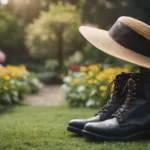Gardening enthusiasts often wonder whether perennials, plants that grace our gardens year after year, can thrive in pots. The answer is a resounding yes. Planting perennials in containers offers flexibility and is a space-saving solution for those with limited garden space. This article aims to guide you through the process of successfully growing perennials in pots, covering everything from plant selection to maintenance.
Perennials
Perennials are plants that live for more than two years, unlike annuals which complete their life cycle in a single season. These plants come back each year, often growing larger and more robust with each season. Perennials vary widely in terms of size, bloom time, and environmental preferences, making them versatile choices for gardeners. While traditionally grown in the ground, many perennials adapt well to container life, though the experience can be quite different from in-ground planting. This adaptability allows for creative gardening in limited spaces, such as patios or balconies.
Benefits of Planting Perennials in Pots
Container gardening with perennials offers several advantages. The mobility of pots allows you to rearrange your garden for aesthetic appeal or to accommodate the changing sunlight patterns throughout the year. Containers can also be a solution for gardeners dealing with poor soil quality, as they allow complete control over the soil and nutrients available to the plants. Additionally, pots can offer some protection from pests and extreme weather conditions. Container gardening with perennials not only adds flexibility but also brings a unique aesthetic charm, with the potential to transform spaces like patios, balconies, and indoor areas.
Choosing the Right Perennials for Pots
The key to successful container gardening with perennials lies in selecting the right plants. When choosing perennials for pots, consider factors like the plant’s mature size, root system, and sunlight requirements. Compact varieties or dwarf forms of larger plants often work best in containers. Plants that require less room to spread their roots are ideal. Also, consider the amount of sunlight your container garden will receive. Some perennials, like hostas or ferns, thrive in shade, while others, such as lavender or salvia, need full sun.
Examples of perennials that do well in containers include Daylilies, Coral Bells, and Echinacea. These plants not only adapt well to the confines of a pot but also offer beautiful blooms and foliage.
Selecting the Appropriate Containers
The right container is just as important as the plant itself. The size of the pot should accommodate the plant’s root system with room to grow. Generally, a larger pot is better, as it provides more soil to hold moisture and nutrients. The material of the pot also matters; terracotta pots are porous and allow soil to breathe, but they dry out quickly. Plastic and wood are other popular choices, each with its advantages and drawbacks.
Drainage is crucial for potted perennials. Ensure that your pots have adequate drainage holes to prevent water from pooling at the bottom, which can lead to root rot. If a pot doesn’t have holes, you can drill them yourself.
Soil and Fertilization Needs
Potted perennials require soil that drains well yet retains enough moisture to keep roots healthy. A high-quality potting mix is usually more suitable than garden soil, as it’s specifically formulated for container gardening. Additionally, perennials in pots may need more frequent fertilization than those in the ground. This is because nutrients are more quickly leached out of containers with each watering. Use a balanced, slow-release fertilizer to provide a steady supply of nutrients throughout the growing season.
Watering and Maintenance
Watering perennials in pots requires a careful balance. Over-watering can lead to root rot, while under-watering can stress the plants. The frequency of watering depends on various factors including the size of the pot, the type of soil, and the weather conditions. A good rule of thumb is to water when the top inch of the soil feels dry. It’s also important to adjust your watering routine with seasonal changes; plants typically need more water during hot, dry periods and less during cooler, wetter times.
Regular maintenance, such as deadheading spent blooms and pruning, can encourage more robust growth and flowering in perennials. Periodically check for signs of pests or diseases, and treat them promptly to prevent spread.
Overwintering Perennials in Pots
Overwintering perennials in pots can be challenging, especially in colder climates. Not all perennials can survive freezing temperatures in a container, as the roots are more exposed to the cold than when planted in the ground. To protect your plants, consider moving pots to a sheltered location, like a garage or basement, during the winter months. For hardier varieties, insulating the pot with bubble wrap or burlap can provide extra warmth. Additionally, ensuring that the soil is dry before a freeze can help prevent root damage.
Some gardeners opt to bring perennials indoors during the winter. If you choose this route, provide the plants with adequate light and water, and be aware of the warmer indoor temperatures, which can affect the plant’s dormancy cycle.
Conclusion
Planting perennials in pots is not only feasible but also a wonderfully flexible and rewarding gardening practice. It allows gardeners to create dynamic, portable displays that can be adapted to suit changing conditions and preferences. Remember to choose the right plants and containers, pay attention to soil quality and drainage, and maintain a consistent watering and care routine. With these considerations in mind, your potted perennials can thrive, bringing beauty and life to your space year after year. Whether you’re an experienced gardener or a beginner, the world of container gardening with perennials offers endless possibilities for creativity and enjoyment.



